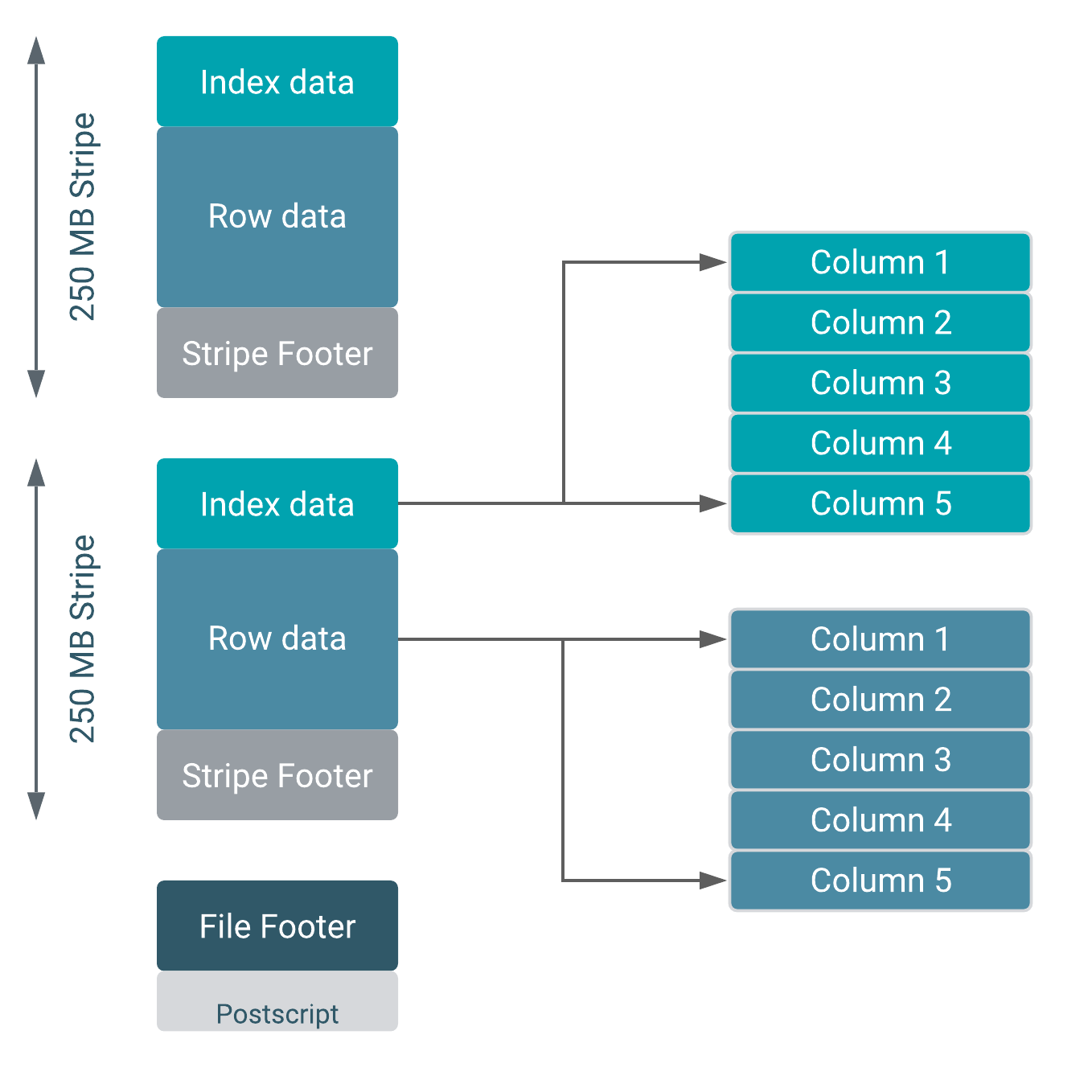ORC file format
You can conserve storage in a number of ways, but using the Optimized Row Columnar (ORC) file format for storing Apache Hive data is most effective. ORC is the default storage for Hive data.
The ORC file format for Hive data storage is recommended for the following reasons:
- Efficient compression: Stored as columns and compressed, which leads to smaller disk reads. The columnar format is also ideal for vectorization optimizations in Tez.
- Fast reads: ORC has a built-in index, min/max values, and other aggregates that cause entire stripes to be skipped during reads. In addition, predicate pushdown pushes filters into reads so that minimal rows are read. And Bloom filters further reduce the number of rows that are returned.
- Proven in large-scale deployments: Facebook uses the ORC file format for a 300+ PB
deployment.

ORC provides the best Hive performance overall. In addition, to specifying the storage format, you can also specify a compression algorithm for the table, as shown in the following example:
CREATE TABLE addresses (
name string,
street string,
city string,
state string,
zip int
) STORED AS orc TBLPROPERTIES ("orc.compress"="Zlib");
Setting the compression algorithm is usually not required because your Hive settings include a default algorithm. Using ORC advanced properties, you can create bloom filters for columns frequently used in point lookups.
Hive supports Parquet and other formats for insert-only ACID tables and external tables. You can also write your own SerDes (Serializers, Deserializers) interface to support custom file formats.


